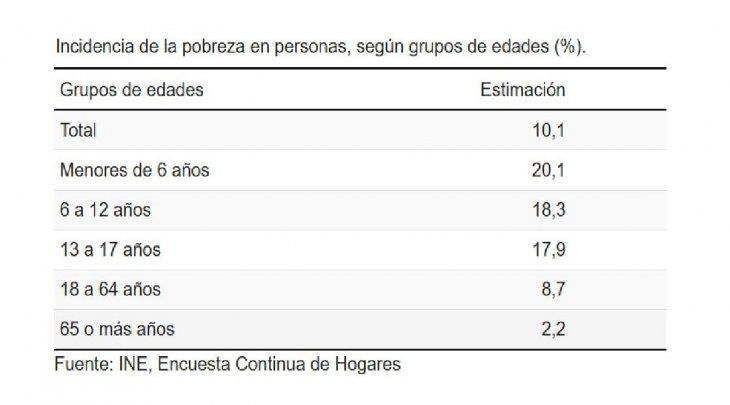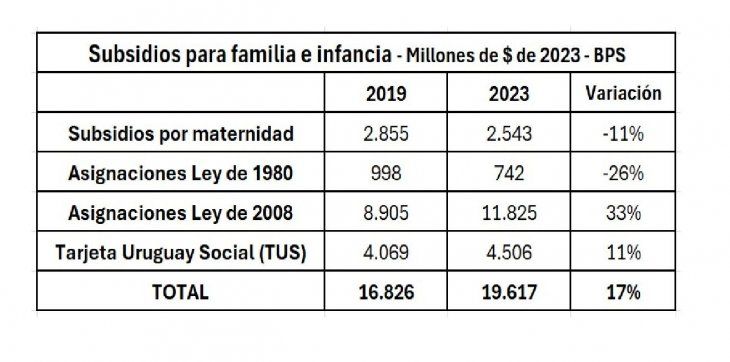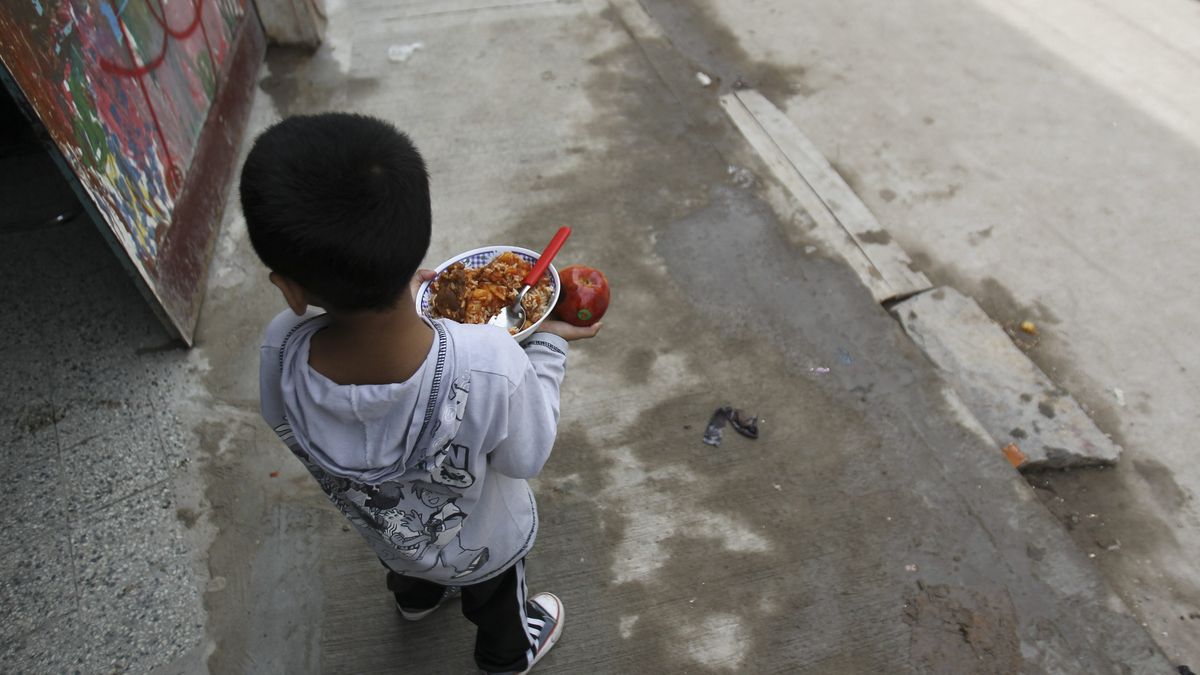He National Institute of Statistics (INE) disclosed the data of poverty in Uruguay measured by income level, corresponding to the year 2023. In number of people, poverty reaches 10.1%, two tenths of a percentage higher than the previous year, a non-significant difference. However, given the increase in real salary and in the employment that was recorded in the last year, a certain improvement (fall) in poverty was expected. Furthermore, although the GDP did not advance last year due to the drought and the Argentine crisis (among other things), it had a good previous performance and will surely resume growth this year.
This leads us to think about what could be the causes of this stability that has been going on for some years now (graph). In the short term, it must be noted that the Homelessness Line and – to a lesser extent – the Poverty Line (that is, the income levels below which households or people are considered indigent or poor respectively) increased above the inflation. This is surely due – among other factors – mainly to the sharp increase in the price of some foods that occurred last year. This difference occurred especially in the interior, where inflation was 4.6%, while the Poverty Line increased 5.4% and the indigence line increased 6.2%.
Poverty in Uruguay.jpg
Photo: Nicolás Lussich/Ambito Financiero
But this is surely a secondary effect on the overall data. Given that the economy recovered after the impact of the pandemic and the GDP is at higher levels, it is then worth looking at what is happening in terms of employment and activity in those sectors most affected by poverty, particularly in workers who are linked to jobs precarious -generally informal- with little job stability and with low complexity tasks and (therefore) low income.
The labor informality (gateway to poverty) fell from 25% in the pre-pandemic years to 20% in subsequent years, and then reached the current 22%. It is progress, but there is still much to improve.
On the other hand, it seems clear that there is a process of profound technological change – which even the pandemic accelerated – and everything indicates that it will continue with greater force, with the impulses of Artificial Intelligence (AI) and the permanent advances in the information technology and communications. Just as at the time the energy-industrial revolution automated many processes in the field and then in industry, today practically all service sectors (customer service, porters, sales, finance) are exposed to automation processes and greater efficiency, which which reduces the possibilities of generating employment for people with low training there.
To improve the situation of people with lower incomes, policies in recent decades aimed to raise especially low wages (minimum wage and lower income categories in wage councils). This was surely key to reducing poverty levels in recent decades, but if employment – the labor link to apply those minimums – is not specified, the impact of this measure remains by the wayside and does not solve the problem of people with low income. training that are left out of the working market. A “hard core” of poverty could be emerging there, which – if an analysis of the evolution of recent years is carried out (graph) – could be located on the 10% axis.
In fact, between 2005 and 2010 (first government of Tabare Vazquez) the poverty It fell to less than 20%, due to the policies implemented and the reactivation of the crisis. A new advance occurred in the government of Jose Mujica, with the economy continuing at full speed, and poverty fell to 10%. In 2017-18 (Vázquez’s second government) the historical minimum was reached, on the axis of 8% of people living in poverty, and then (with the economy with much lower growth) it increased to 8.8% in 2019, with fall in employment. After the impact of the pandemic, poverty fell, but now remains at 10% for the second year. It is little time to draw definitive conclusions, but the concern is worth it.
Child poverty and social policies
Once again, INE data show that the poverty is concentrated on the childhood and adolescence, with the percentage of poverty in those under 18 years of age being between 18 and 20%. These children and adolescents live in poor homes, that is, with adults whose income is not enough to remove the family unit from this condition.
Incidence of poverty in people.jpg

Incidence of poverty in people.
To face this situation, the State deploys relevant social policies, the most important of which is the granting of Family’s asignations to those homes. The attached table shows the budget contribution in 2023, compared to 2019, in subsidies linked to family and maternity. Last year, more than 19.6 billion pesos were allocated to these subsidies (about US$505 million). The figure is 17% higher in real terms than in 2019, due to the increase in the Allocations of the 2008 law and the amounts of the TUS (Uruguay Social Card).
Subsidy for families and children.jpg

Subsidies for families and children.
Photo: Nicolás Lussich/Ambito Financiero
It is an important budgetary effort, but much less than that – for example – applied to the subsidy of the retirements (which have a deficit of US$ 2,000 million). Viewed that way, I would think there should be a consensus to change this. However, at the time of political budget definitions, those in their fifties, parastatal funds and now with the call for the plebiscite, it seems that children and adolescents are always left behind. In a State with a fiscal deficit of 3.8% of GDP, everything indicates that – in addition to increasing the amounts in absolute terms – spending must be prioritized very differently. But of course…. children don’t vote.
Family Allowances reach more than 450,000 beneficiaries, but with average contributions ranging from 1,700 to 1,900 pesos. Increasing this would surely go a long way to reducing the child poverty. In the design of this policy (that is, how it is applied) the current government made important progress by maintaining the subsidy even when the family nucleus exceeds the income it had at the time of being benefited; Before, progress was “penalized”: a member got a job and the Allowance was removed. It is an important aspect to reinforce the path out of the situation of lack.
The other key point is care: many poor households are single parent (with women heads of household) who, if they aspire to have children and work, require more powerful support during working time. But this also requires a budget and the corresponding political priority.
Thus, everything indicates that, to thoroughly address the problem of poverty We must target child poverty, which means supporting more workers who – with little income – want to form and support a family. If the issue is not addressed with a certain speed and effectiveness, the conditions of need remain from generation to generation, and become increasingly difficult to overcome because then frustration, exclusion and the social damage more permanent. After the serious crises suffered by the Uruguay Decades ago, the country managed to lower poverty to 10% or less, but a new effort is needed.
It is possible (hopefully) that poverty will go down this year, with greater economic growth and minor inflation, and to the extent that employment is sustained. Public policies are key to – in the long term – achieving effective advancement of the next generation; a structural change with greater social integration, greater training of workers, and opportunities for their children.
Source: Ambito




